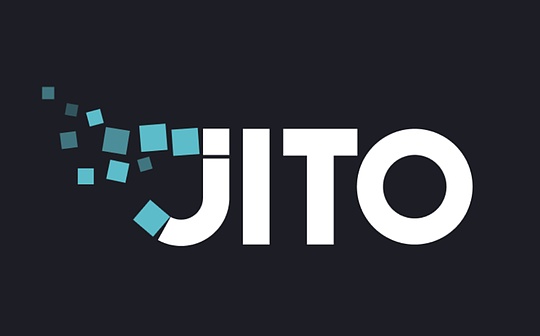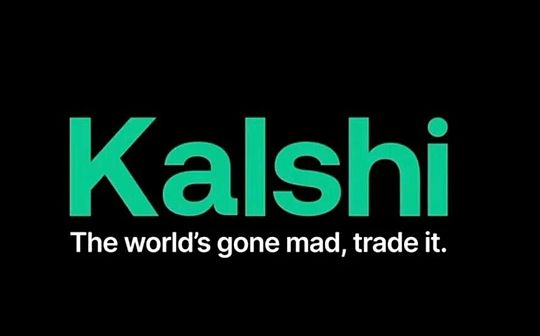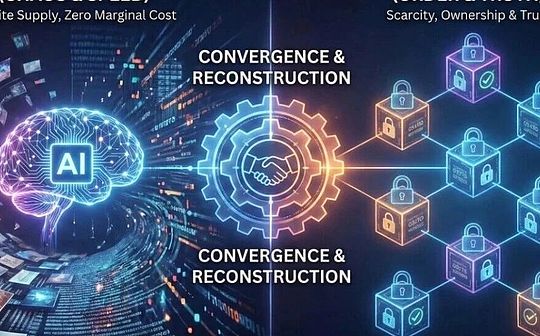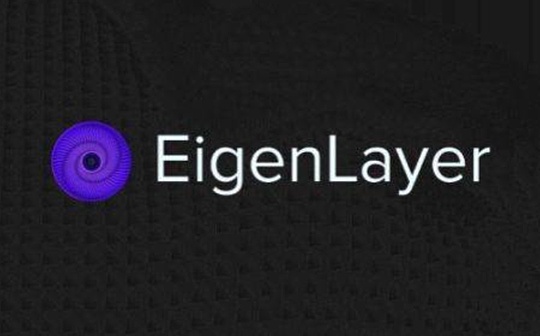
Author: Alex Nardi Source: Shoal Research Translation: Shan Oppa, Bitchain Vision
In the Web3 field, the pursuit of efficient, secure and scalable decentralized applications (dApps) has driven innovation in various blockchain networks.As the blockchain ecosystem expands, the demand for a powerful infrastructure that can support diversified applications is growing, while not sacrificing security and decentralization.EigenLayerIt is a pioneering platform for modular blockchain infrastructure, with transformative solutions created byActive Validator Sets (AVS, Active Validator Sets)Addressed this challenge.AVS enables developers to launch decentralized, self-executing systems, expand blockchain capabilities, and unlock new dimensions of coordination and trust.With EigenLayer, developers can programmatically deploy distributed off-chain services that follow trusted commitments to ensure that the system operates as expected without centralized supervision.
EigenLayer’s innovationsAgainRestaking mechanismAt the core, it enhances the traditional staking model, allowing participants to provide economic security for multiple platforms and services.While heavy staking provides additional profit opportunities for stakeholders, its real meaning is to support the reliable operation of AVS and thus drive a new wave of blockchain adoption.By creating AVS, EigenLayer provides transformative value for developers and users, building a decentralized, market-driven ecosystem that enables innovative applications to thrive.AVS lowers barriers to entry, unlocks scalable economic security, and enables developers to deploy systems based on trusted commitments and self-execution mechanisms.
This report discusses in detail how EigenLayer’s restaking model redefines the network startup method and usesThe RollupPodcast SeriesEigenLayer Unlocked, and analyze the progress of its heavy stake ecosystem, operational incentive mechanism and modular cross-chain architecture.This report can serve as a comprehensive reference guide for podcasts, providing readers with in-depth core concepts and insights.Readers are advised to listen to the full series of podcasts for a richer understanding.
Repositioning economics and cybersecurity
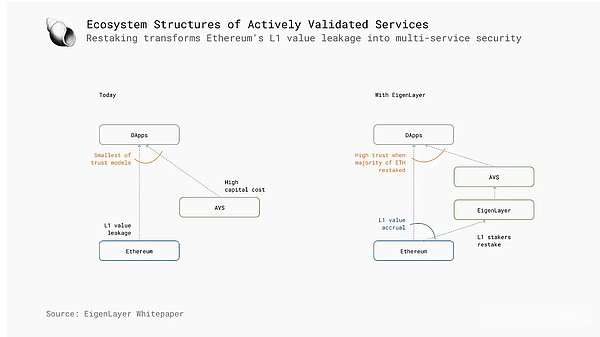
The core of EigenLayer’s contribution to the blockchain space is the concept of restaking, which enables other networks and/or dApps (often referred to as AVS) running outside of Ethereum virtual machines (EVMs) to take advantage of Ethereum’s own consensusThe mechanism serves as the underlying security layer.Restaking creates opportunities for stakers to use liquid staking tokens (LSTs) to increase returns, while enabling new networks to leverage a shared economic security pool to help them overcome not only startups in the blockchain space but also in all industries.The “cold start” challenge.For Ethereum where most restaking activities occur, stakers invest their assets into the network, and through the EigenLayer method, they can further “restaking” these assets to support other services without damaging their major Ethereum staking.
Re-pled is based on the concept of pledge rewards, providing higher benefits by participating in protecting a range of services, each offering its own native token rewards and potentially bringing associated cutback risks.While these risks may affect principal assets (i.e., including original ETH staking and additional pledge rewards), they can be compensated by the possibility of greater returns – although the value of these additional benefits ultimately depends on each individual choice of protectionAVS earns the price of the underlying native token.
Therefore, restaking provides a huge incentive for stakers and AVS developers: it creates an economically viable ecosystem whereby services can be launched and scaled more easily by leveraging shared security pools.By lowering the barriers to decentralized security access to small-scale applications, EigenLayer has accelerated the pace of decentralized innovation.This accessibility allows developers to bootstrap the network for previously unrealistic niche use cases, resulting in a ripple effect of innovation and iteration cycles.
Unique equity mechanism and cascading security
While the launch of AVS is the cornerstone of EigenLayer’s innovation, restaking introduces mechanisms to ensure the scalability, sustainability and credibility of these systems.Slashing plays a key role in this ecosystem, acting as a safeguard for liability between stakeholders and operators.It ensures that AVS can run as a high trust system, and that all participants (users, stakers, and operators) can rely on the network to operate as expected and impose meaningful penalties for failure or malicious behavior.
To support AVS, EigenLayer enables a powerful framework where:
-
PledgeAllow participants to contribute security in exchange for profit.
-
Delegate to the operatorEnsures those who perform AVS tasks link financial benefits to their performance.
-
awardIncentives the contribution of stakeholders and operators, thus creating a sustainable economic model.
-
Launch AVSAllow developers to use EigenLayer to create new decentralized services and value propositions for users.
In this case, cuts are the ultimate but essential mechanism for maintaining network integrity.While the cuts have no direct relationship with AVS’ ability to create value, it ensures that the restaking model can be safely scaled.Without it, a chain failure (a security vulnerability in one AVS or a cut-off incident affecting other AVS) would pose a significant risk to the wider ecosystem.EigenLayer solves this challenge with innovations such as “unique staking” that can isolate risks and prevent chain attacks, thus maintaining the underlying trust and reliability of the entire system.
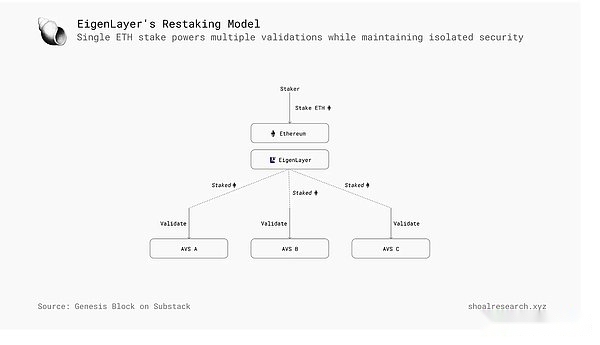
Unique interests specialize specific portions of the equity holder’s assets for each service.This means that if a cut occurs in a service, other commitments from stakeholders will be protected, thus protecting the rest of the network.This mechanism is particularly valuable in maintaining trust among connected services, as it ensures that economic failures in one area do not automatically compromise the security of unrelated services.Unique interests not only improve security, but also enhance the confidence of developers and users, encouraging more equity holders to participate in re-staking, thus creating a stable economic environment for dApps.
Economic coordination among participants
In a multi-stakeholder ecosystem, coordinating incentives for stakers, operators and services is essential to maintaining a vibrant resolution economy.EigenLayer’s model builds economic coordination by providing returns proportional to the risks that each party assumes, but this balance is very subtle.The main motivation of the pledger is to pursue higher returns on their pledged assets, while operators that facilitate services prioritize fair rewards and reliable service conditions.Meanwhile, the service or dApp itself seeks to attract sufficient economic security and active operators to ensure stability and scalability.
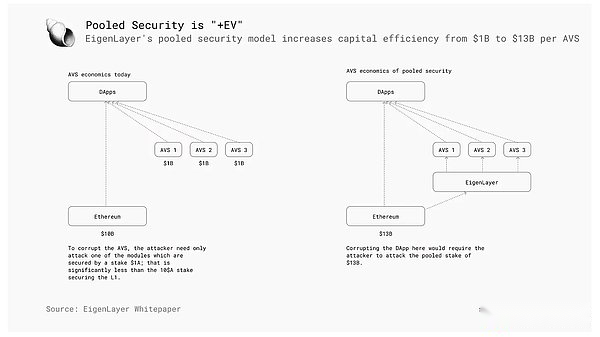
This coordination is achieved by inspiring each participant in a transparent and market-driven manner.For example, operators can choose services based on their desired level of compensation and security requirements.This choice allows operators to leverage their technical capabilities, whether operated through personal devices or large infrastructure, to participate in services that meet their risk tolerance and resource availability.On the other hand, the service benefits from EigenLayer’s flexible reward system, which allows them to adjust their spending based on operator contributions and market conditions, thus creating an adaptable ecosystem where participants’ incentives are naturally consistent.
By adopting a market-based approach, EigenLayer relies on supply and demand principles to maintain economic balance within the ecosystem.This dynamic incentive-driven approach allows EigenLayer to build a sustainable economic flywheel that benefits all participants and promotes the continued growth of the decentralized application ecosystem – especially consolidating Ethereum’s leadership in the field.
The role of operators, cuts and Liquid restakes
In the EigenLayer ecosystem, operators play a key role in ensuring the smooth operation and security of networks and services that rely on re-collateralized assets.Operators are responsible for maintaining the infrastructure that supports these services, whether through running nodes, verifying transactions, or supporting technical backbones of the underlying network.
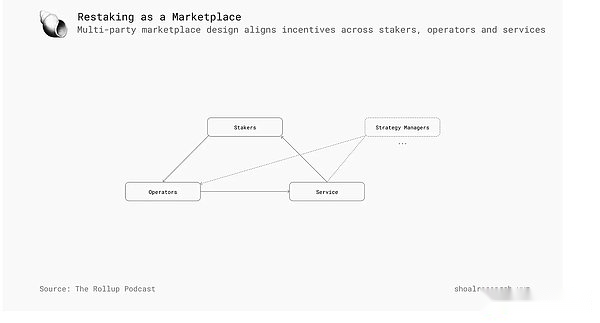
To adapt to diversity among operators (from operators with minimal resources to large enterprises), EigenLayer adopts an arbitration-based model called the operator set.These sets provide a structured way to organize and reward operators in a specific way to address the specific security, performance, and resource requirements of different services.
The importance of a group-based model
Operator Arbitration allows EigenLayer to tailor service requirements and rewards to each type of operator to meet a variety of service needs.For example, some services may require highly secure dedicated servers to manage mission-critical tasks, while others may work with operators with limited resources.Operator arbitration provides the necessary flexibility to both ends, creating a scalable and inclusive network that accommodates a variety of technical functions.
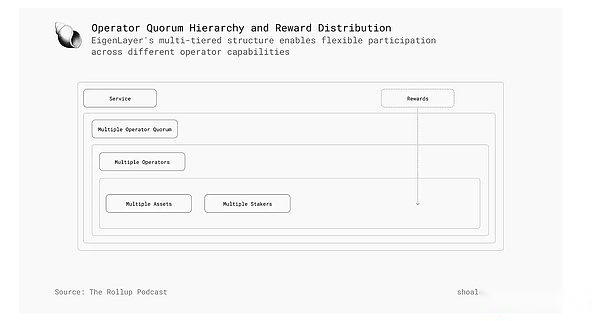
The operator arbitration model not only enables the service to specify its unique security and performance requirements, but also simplifies the operator’s decision-making process, which can evaluate its capabilities based on the requirements of different arbitrations.This approach allows operators to choose their own services that meet their resource capacity and compensation goals, thereby reducing friction.
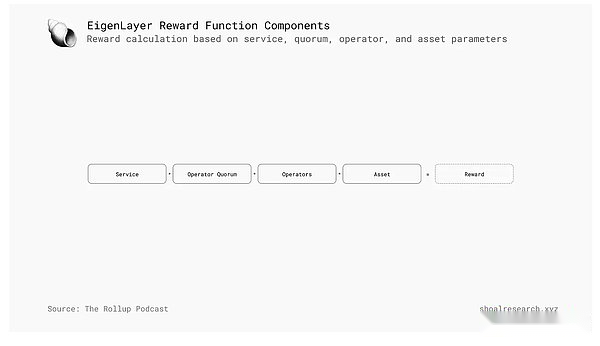
With the expansion of EigenLayer, the operator arbitration structure is expected to continue to evolve, supporting increasingly complex services and expanding the potential for more professional platforms to launch and develop within the ecosystem.
Reduction mechanisms and risk management
One of the core challenges of maintaining a decentralized and secure network is to ensure operators are responsible for their performance.EigenLayer addresses this issue with a carefully designed penalties mechanism that penalizes operators who fail to meet the Service Level Agreement (SLA) set by their designated arbitrators.Operators may be punished if they violate these protocols (whether offline, provide incorrect data or otherwise compromise the integrity of the service).
EigenLayer’s penalties are critical to managing risks within the ecosystem, as it incentivizes operators to maintain high standards and prevent behavior that could harm the network.In addition to punishing poor performers, the mechanism also includes a “forced eviction” condition to prevent non-compliant operators from continuing to receive rewards within the quorum.By enforcing these standards, EigenLayer creates a system that only reliable operators can maintain participation, which in turn enhances the overall integrity of network-dependent services.
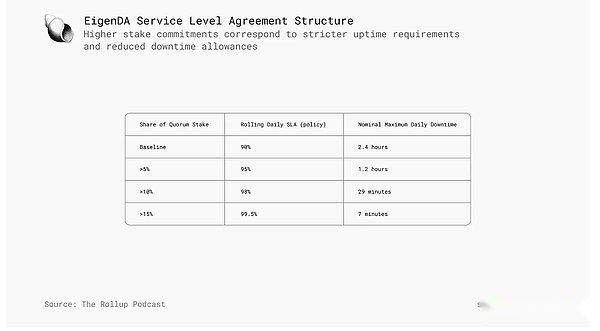
Cutting down models is critical not only to protect individual services, but also to maintain the stability of the entire EigenLayer ecosystem.When operators realize that they may lose their pledged assets due to failure to meet the SLA, they are more likely to prioritize high-quality services.This combination of incentives cultivates a culture of reliability and responsibility among operators, which is essential to building and maintaining trust in a decentralized network.Additionally, by directly punishing operators, EigenLayer reduces the risk of chain failures that could otherwise endanger the network and the services it depends on.
Liquidity re-pled and market-driven efficiency
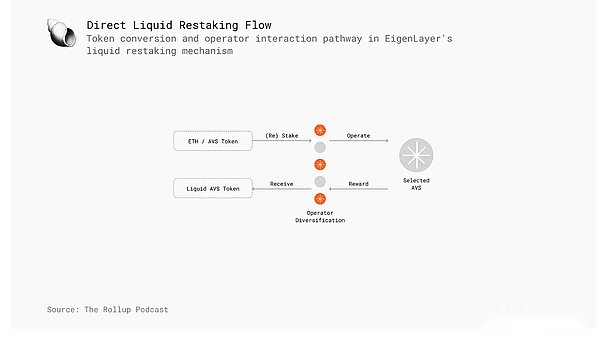
Another versatile aspect of the EigenLayer re-staking model is that it supports liquidity re-staking, which allows stakers to redistribute assets between services based on market conditions.Liquidity re-staking enhances the flexibility of the EigenLayer market, allowing pledges to adjust their allocations based on potential returns, risk tolerance and market demand.This dynamic distribution system is particularly beneficial for pledges seeking to maximize their benefits while managing individual risks.
Liquid re-staking also plays an important role in improving EigenLayer market efficiency.By allowing stakeholders to seamlessly transfer assets between services, EigenLayer reduces the need for manual intervention and coordination, instead relying on market dynamics to balance supply and demand within the ecosystem.This approach uses the market’s “invisible hands” to improve efficiency and ensures that assets are allocated to places that can have the greatest economic impact.It also enables EigenLayer to adapt to changing conditions in the rapidly expanding blockchain landscape, enhancing its long-term resilience.
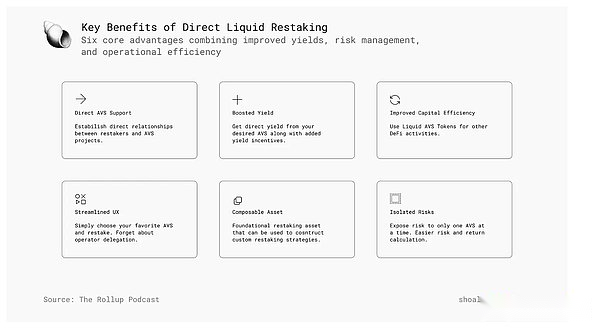
The benefits of liquidity re-pled also extend to operators.Operators can adjust strategies and service products based on real-time feedback from the market, thereby responding to changes in demand and optimizing resource allocation.For example, if demand for high security services increases, operators who can meet these requirements may receive higher returns, incentivizing them to invest in stronger infrastructure.This feedback loop creates a self-regulated ecosystem where operators and stakeholders will naturally tend to the most profitable and reliable services, thereby increasing overall efficiency.
In addition, liquidity re-staking promotes a more inclusive network by lowering the barrier to entry.Both stakers and operators can participate in the ecosystem without the commitment of a single, strict service or configuration.This flexibility supports the decentralized nature of the network, as participants can adjust their participation over time based on new opportunities or changes in market conditions.For AVS developers, this model provides a ready-to-use economic security pool that enables new services to be launched quickly without the need for a large amount of initial capital.
As EigenLayer’s operator quorum, cut-off mechanisms and mobile restaking processes create a flexible and efficient market, they lay the foundation for more ambitious innovation: enabling seamless, modular applications across multiple blockchains.
Stateless applications and cross-chain innovation
With the development of blockchain networks, applications built on single-chain architectures face limitations in terms of liquidity, scalability and flexibility.These problems are further exacerbated by the increasing variety of networks, each with its own assets, protocols and communities.To address these challenges, Skate, a platform built on EigenLayer, introduced stateless applications that enable seamless cross-chain interactions, thus changing the way dApps operate in a multi-chain ecosystem.
Skate’s Stateless Design
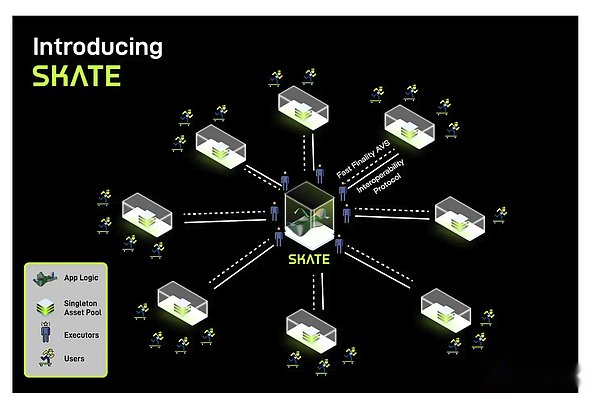
Skate’s stateless architecture represents a significant shift with traditional dApps, which rely on specific blockchain environments to execute logic and maintain state.By separating application logic from individual chains, Skate enables developers to create modular, interoperable applications running across multiple networks.Stateless applications adopt a “center radiation” model, with core logic running in the central center, while users interact through various blockchain “radiation”.
In a Skate-driven dApp, users can initiate transactions on a chain, such as Ethereum, while core application logic and security are maintained on another network that acts as a central hub.This model creates a unified experience that allows dApps to share liquidity, process data across chains, and avoid duplicating their application state.This central logical management gateway makes it easier for developers to maintain and scale applications without being restricted by a single chain.
EigenLayer’s infrastructure acts as a decentralized “hub” that manages application state and economic security, thus enabling this stateless architecture.By moving complex multi-chain coordination to this hub, EigenLayer and Skate simplify cross-chain interactions, making scalable and efficient multi-chain applications a reality.
The central radiation model of cross-chain liquidity
One of the main advantages of Skate’s stateless design is its ability to unify cross-chain liquidity.Traditionally, liquidity is decentralized and assets are isolated on different networks.For example, liquidity of Ethereum-based applications is usually only accessible to Ethereum users, which limits cross-chain interactions.However, Skate’s central radiation model gathers liquidity from various chains in a central hub, allowing users to seamlessly access across the network.
EigenLayer’s support for this architecture facilitates the flow of assets and data between blockchains.By allowing liquidity pools from different chains to merge, EigenLayer enables users to interact with applications on any connected blockchain without facing liquidity shortages.This cross-chain liquidity favors decentralized finance (DeFi) applications that often rely on large liquidity pools to increase efficiency.With Skate, DeFi protocols can gain unified liquidity, provide competitive interest rates and reduce transaction costs, addressing common problems in previous multi-chain DeFi deployments by integrating assets into a single structure
Economic security of cross-chain applications
The success of cross-chain applications depends on strong economic security to protect assets across multiple blockchains.EigenLayer’s role as an economic trustee is crucial to this framework.Through restaking, EigenLayer provides a strong economic base to leverage the stakeholder’s collective assets to protect and verify the operations of cross-chain Skate applications.
For cross-chain applications, EigenLayer’s security model can achieve reliable verification and data proof between chains, thus forming a secure and interconnected ecosystem.When a user initiates a transaction on any blockchain connected through Skate, EigenLayer’s network of decentralized stakeholders and operators validates the transaction to ensure it meets the economic requirements of the dApp.
The penalties embedded in the EigenLayer platform helps maintain operator responsibility throughout the process.For example, operators responsible for overseeing cross-chain transactions fail to accurately verify or deliver data, they may face penalties.Given that users may not be familiar with cross-chain interactions, establishing trusted, neutral and decentralized accountability mechanisms is critical to fostering trust and promoting the adoption of stateless applications.
Scalability and development advantages of stateless architecture
In addition to liquidity and security, Skate’s stateless architecture offers huge scalability and development benefits.By developing a “control center” for application state management on EigenLayer’s hub, dApps on Skate can run on multiple blockchain networks without duplicate code or assets.Developers maintain a single instance of the application’s core logic, making updates more efficient and reducing maintenance costs.This adaptability is especially valuable in the multi-chain future, allowing developers to expand the coverage and impact of their applications with minimal friction.
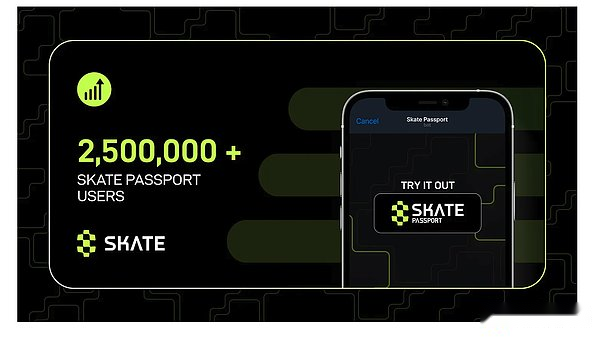
To fulfill its commitment to cross-chain accessibility, Skate recently launched its first stateless application pilot by integrating the popular Web3 forecasting market Polymarket.Polymarket was previously hosted only on Polygon (Ethereum Layer 2) and is now accessible via Skate Passport on TON, allowing millions of Telegram users on the TON blockchain to interact directly with the forecast market without bridging.Skate’s stateless design pattern enables applications such as Polymarket to run seamlessly in different blockchain environments, ensuring that users can get a unified experience no matter what the underlying chain is.
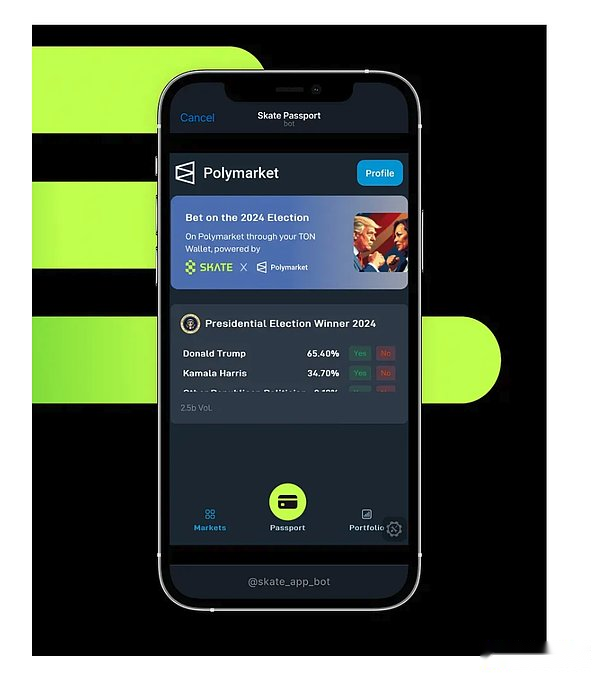
This pilot is an important milestone for Skate to achieve its broader vision, which aims to make powerful dApps accessible across a variety of blockchain ecosystems.Through its stateless infrastructure, Skate plans to extend access to Polymarket and other applications to other chains, including Solana and other EVM-compatible networks such as Mantle.This seamless multi-chain deployment illustrates the scalability benefits of the Skate architecture, enabling dApps to reach new audiences and take advantage of the broader network effects.Users can now access the Polymarket pilot on Telegram at https://t.me/skate_app_bot/app.
From a scalability perspective, unified application logic can mitigate the traditional growth limitations of dApps.Applications can be effectively extended across chains without being bound by a single network limitation.With EigenLayer handling cross-chain verification and economic security, developers can focus on building user-centric features and enhancing capabilities rather than managing the complexity of infrastructure.
Practical significance and future prospects
As EigenLayer’s stateless application model and cross-chain capabilities show, the platform provides a strong foundation for a truly modular and interconnected blockchain ecosystem.By combining technological innovation with strong economic security, EigenLayer enables new dApps to scale, share liquidity and build user-friendly services across chains.With the continuous development of the decentralized pattern, adopting this model has many potential practical advantages worth exploring and potential challenges.
Advances in dApp development
EigenLayer’s restaking model and stateless application architecture solve some of the most pressing challenges faced by dApp developers, such as liquidity fragmentation, scalability constraints, and single-chain restrictions.By leveraging the security of the sharing economy and enabling seamless cross-chain interactions, EigenLayer enables developers to build modular, scalable applications without duplicate infrastructure or liquidity.
These innovations bring greater efficiency and flexibility to developers.With EigenLayer, dApps can leverage a unified liquidity pool, reduce technical overhead and deploy applications across multiple chains with minimal modification.This approach lowers the barriers to entry, promotes adoption, and creates an easier access environment for dApp development.
In the DeFi space, EigenLayer’s solutions are particularly transformative, enabling agreements to unify liquidity, provide competitive interest rates and increase capital efficiency.By addressing these long-standing challenges, EigenLayer positioned itself as a key enabler of a more connected and user-friendly decentralized ecosystem.
Challenges and considerations for wider adoption
Despite the numerous advantages of the EigenLayer model, it does face potential challenges when seeking wider adoption.The multistakeholder ecosystem created by EigenLayer’s restake model brings complexity in coordinating incentives between stakers, operators, and dApp developers.Transparent communication and balanced, dynamic incentive structures are crucial to maintaining participants’ trust and participation in the long term.Ensuring that all parties have access to reliable data and tools to assess risks and returns will help resolve these issues.
Another consideration is that potential regulatory scrutiny may occur as the EigenLayer ecosystem develops and more cross-chain interactions occur.As blockchain networks, especially DeFi, continue to face increasing regulatory concerns, EigenLayer will need to monitor compliance requirements and adapt to changing regulations to ensure the long-term viability of its model.Fortunately, regulatory headwinds may soon turn into tailwinds for the crypto industry as a whole.
Finally, the technical and educational challenges of introducing stateless, cross-chain dApps cannot be underestimated.With EigenLayer introducing new models such as restaking and stateless architecture to the market, comprehensive onboarding resources and community engagement will be necessary investments to ensure public awareness of the significant advantages over the current system.
A decentralized, frictionless future – guaranteed by EigenLayer
EigenLayer is at the forefront of the decentralized revolution and paves the way for a modular, robust and scalable blockchain ecosystem.By introducing breakthrough innovations in restaking, operator incentives and cross-chain interoperability, EigenLayer lays the foundation for a more connected multi-chain world.Its platform enables services to leverage shared security, unify cross-chain liquidity and scale in ways that were previously unavailable, thus changing the decentralized landscape.
As blockchain continues to mature and integrate across industries, EigenLayer’s commitment to modularity and economic security provides a flexible foundation for the next generation of decentralized applications.The stateless architecture powered by its restaking model provides developers with a powerful toolkit for building applications that can be seamlessly moved across chains, from DeFi and games to data storage and more.In a world where single-strand restrictions have become unacceptable, EigenLayer enables dApps to thrive across ecosystems, reach new users and leverage a wider pool of liquidity.
The vision of the future of modular, multi-chain blockchain is no longer just a possibility—it is here, transformed from EigenLayer into reality.For developers, operators, and blockchain stakeholders, this platform represents an invitation to embrace a decentralized future in which Web3 applications can not only compete with Web2, but ultimately surpass it.By combining economic incentives with technological advancements, EigenLayer is creating a resilient and sustainable ecosystem that promises to redefine the boundaries that decentralized applications can achieve

